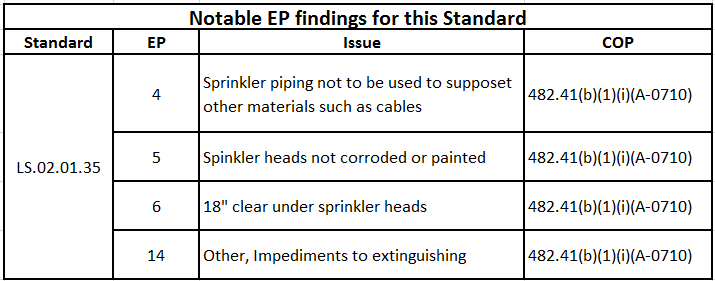Automated Suppression - Clinical Impact
This content includes information linking Environment of Care and Life Safety Code deficiencies and their impact on patient care and patient safety.
LS.02.01.35: The organization provides and maintains systems for extinguishing fires

Features of Fire Safety
Clinical staff must have a basic understanding of the Features of Fire Safety as they work in the healthcare environment. In this environment we do not evacuate immediately in a fire or other emergency condition, but rather ‘defend in place’ by keeping the patients in their beds and rooms. This is possible because of how our hospitals are built, the protection such as sprinklers, and other features of fire safety. Some of the features of fire protection are obvious to the staff and public, others are not. For example, sprinklers in the ceiling are easily seen.
Compliance
The Joint Commission and CMS, as authorities having jurisdiction who have adopted the National Fire Protection Association Life Safety Code, include enforcement is part of accreditation. CMS has adopted the NFPA codes by federal statute, which is why issues like compliance with these Codes is not an option but a requirement.
Many of these Features of Fire Safety are automatic and do not require staff intervention, such as the sprinkler system activation. Others, such as using portable fire extinguishers are dependent on staff to understand how to use them. It is crucial all staff have a basic understanding of how these features work to protect them and their patients or visitors. The tests and inspections ensure the reliability of the systems; the staff training ensures staff are able to respond. Together we have an environment to protect patients.
The sprinkler system is a series of sprinklers that activate in the presence of fire. Each individual sprinkler reacts independently of each other, depending on where the fire is concentrated. Hanging decorations or other materials from the sprinkler head may either cause an unintentional activation of the sprinkler system or compromise the activation during a fire event, and should never occur.



